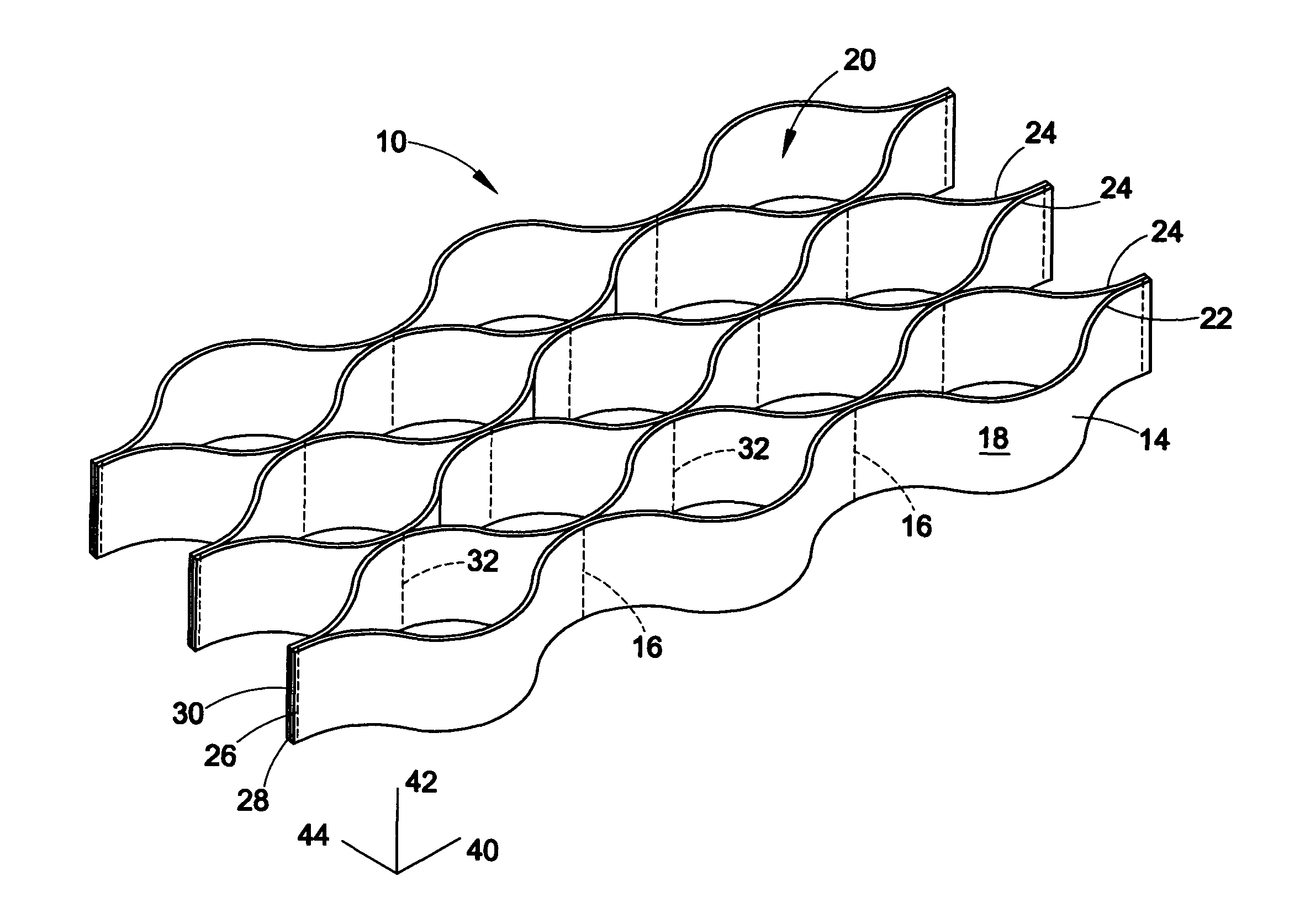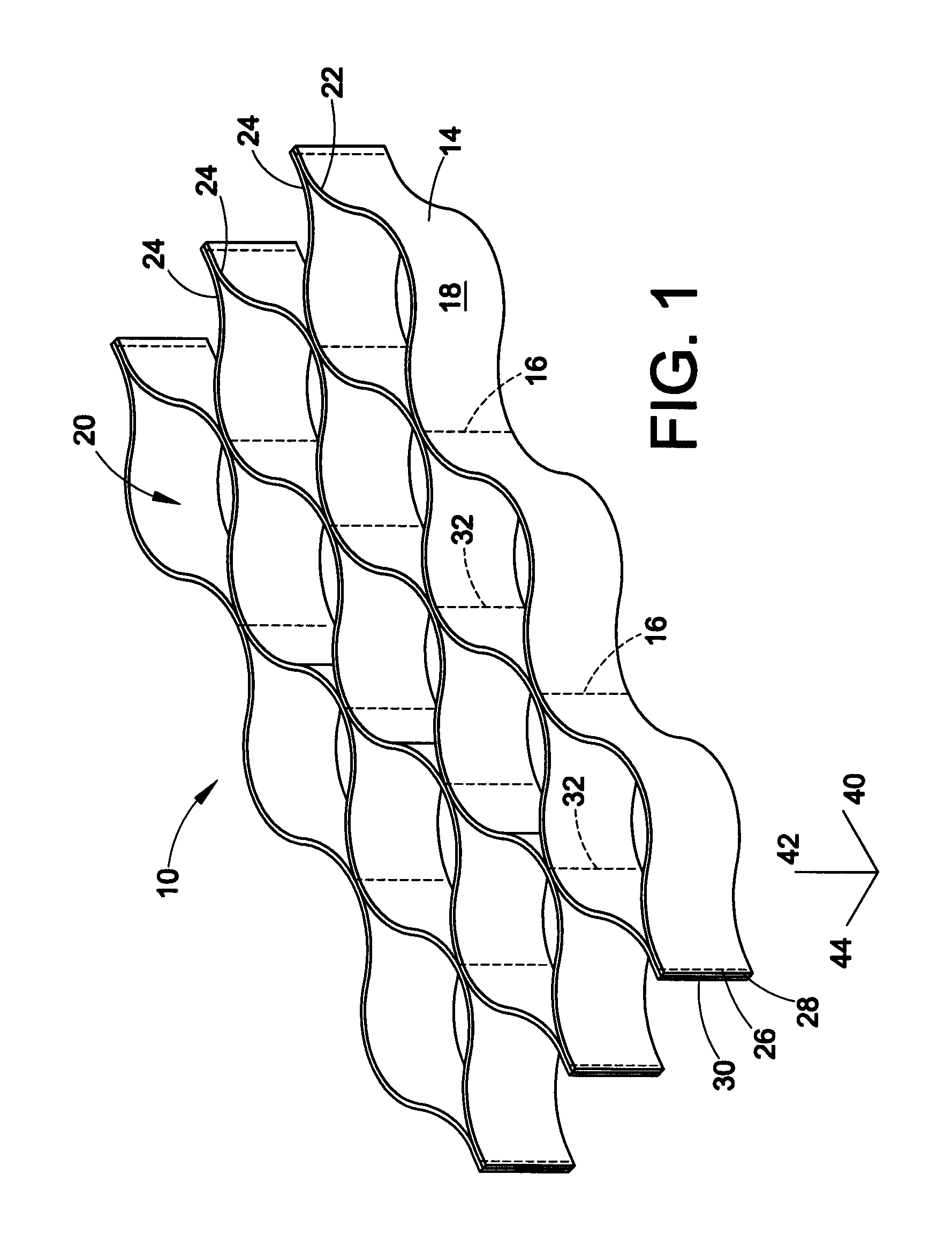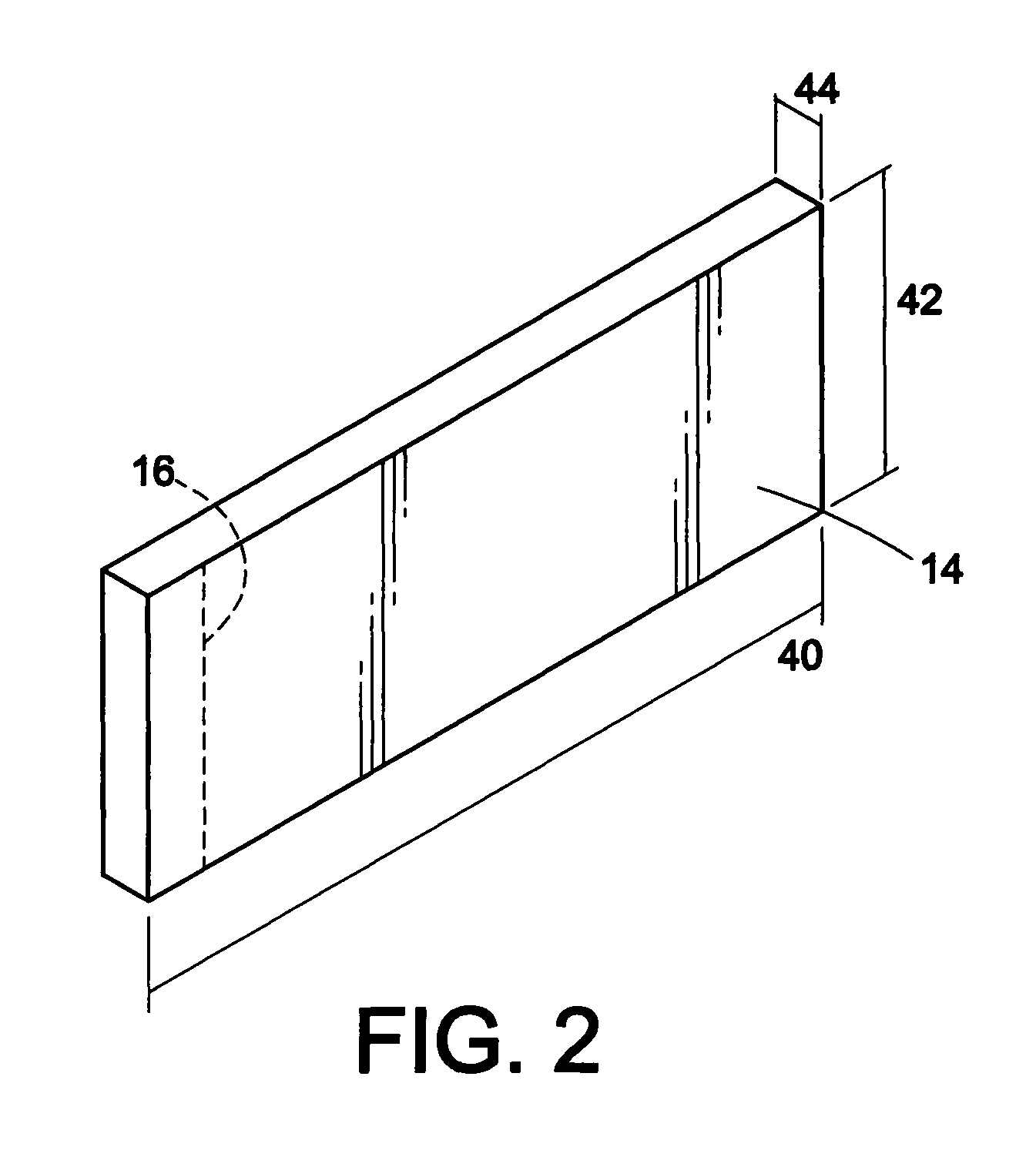Geocell for moderate and low load applications
a geocell and low-load technology, applied in the direction of single-unit paving, transportation and packaging, roads, etc., can solve the problems of market size, low product cost, and low product design optimization, so as to reduce the cost of these geocells, the effect of sacrificing the performance needed
- Summary
- Abstract
- Description
- Claims
- Application Information
AI Technical Summary
Benefits of technology
Problems solved by technology
Method used
Image
Examples
example 1
Medium Strength Geocell for Slope Erosion Control
[0093]A slope protection application utilizes the geocell as an erosion control system installed on top of a slope. FIG. 7 is a schematic cross-section of a typical slope protected by a geocell, infilled with native soil or granular material. FIG. 8 is a schematic showing the different loads applied upon a geocell in slope protection. This figure includes a line indicating zero tensile force. The height of the arrowed line perpendicular to this zero line indicates the load. FIG. 9 is a top view of the geocell in slope protection, and shows how stresses are distributed.
[0094]According to the present disclosure, the specific geocell design is optimized for the specific slope class on factors including:[0095]Geometry: Height (h) and angle (α)[0096]Geocell infill properties: Friction Angle (φ) and Cohesion (C)[0097]Number of pin stake anchors[0098]Design life (which affects the reduction factor)
[0099]Calculation of the tensile forces appl...
example 2
Medium Strength Geocell for Walls
[0108]An earth retention application utilizes the geocell system to globally and locally stabilize steep slopes. Geocell layers are placed horizontally one on another with a layered setback. The major factors affecting wall design are:[0109]Geometry: Height (h) and angle (α)[0110]Geocell infill properties: Friction Angle (φ) and Unit Weight (γ)[0111]Design life
[0112]A schematic diagram of a typical earth retention application is provided in FIG. 10. The area labeled “Weight on Cell 2” represents the second cell row that is subjected to high loads, but a load which is lower than the load on the first cell row labeled “Weight on Cell 1”, which is loaded by the highest loads. Calculations of the load on strips of the highest loaded cells (under worst case scenario conditions) are summarized in Table 2.
[0113]
TABLE 2Wall Angle,Wall Height,Tensile load onSeam splitting loadα [°][m]strip [N / m][N / m]45.050 m 59484045.06 m5948408150 m 3,1864,505816 m3,1864,505...
example 3
Medium Strength Geocell for Walkways and Bicycles Pavements
[0119]An unpaved bicycle path application utilizes the geocell system to improve the granular pavement performance by incrementally increasing the strength, stiffness, and durability under repeated cyclic loading.
[0120]The geocell layer is placed in the surface granular layer (base layer). The following factors are considered:[0121]Subgrade Strength: CBR / modulus (Ei)[0122]Granular layers: thickness (hi), CBR / Modulus (Ei)[0123]Design life
[0124]FIG. 11 is a schematic cross-section showing a typical walkway or bicycle path. Calculation of the tensile forces applied on geocell strips and calculation of seam splitting strength forces on seams, caused by equivalent uniform circular load (bike wheel) on granular surface, are performed where the typical contact pressure of a wheel is 414 kPa (kilopascal).
[0125]Modelling the pavement structure and loading configuration was conducted according to conventional Layered Elastic Theory, p...
PUM
| Property | Measurement | Unit |
|---|---|---|
| thickness | aaaaa | aaaaa |
| thickness | aaaaa | aaaaa |
| distance | aaaaa | aaaaa |
Abstract
Description
Claims
Application Information
 Login to View More
Login to View More - R&D
- Intellectual Property
- Life Sciences
- Materials
- Tech Scout
- Unparalleled Data Quality
- Higher Quality Content
- 60% Fewer Hallucinations
Browse by: Latest US Patents, China's latest patents, Technical Efficacy Thesaurus, Application Domain, Technology Topic, Popular Technical Reports.
© 2025 PatSnap. All rights reserved.Legal|Privacy policy|Modern Slavery Act Transparency Statement|Sitemap|About US| Contact US: help@patsnap.com



